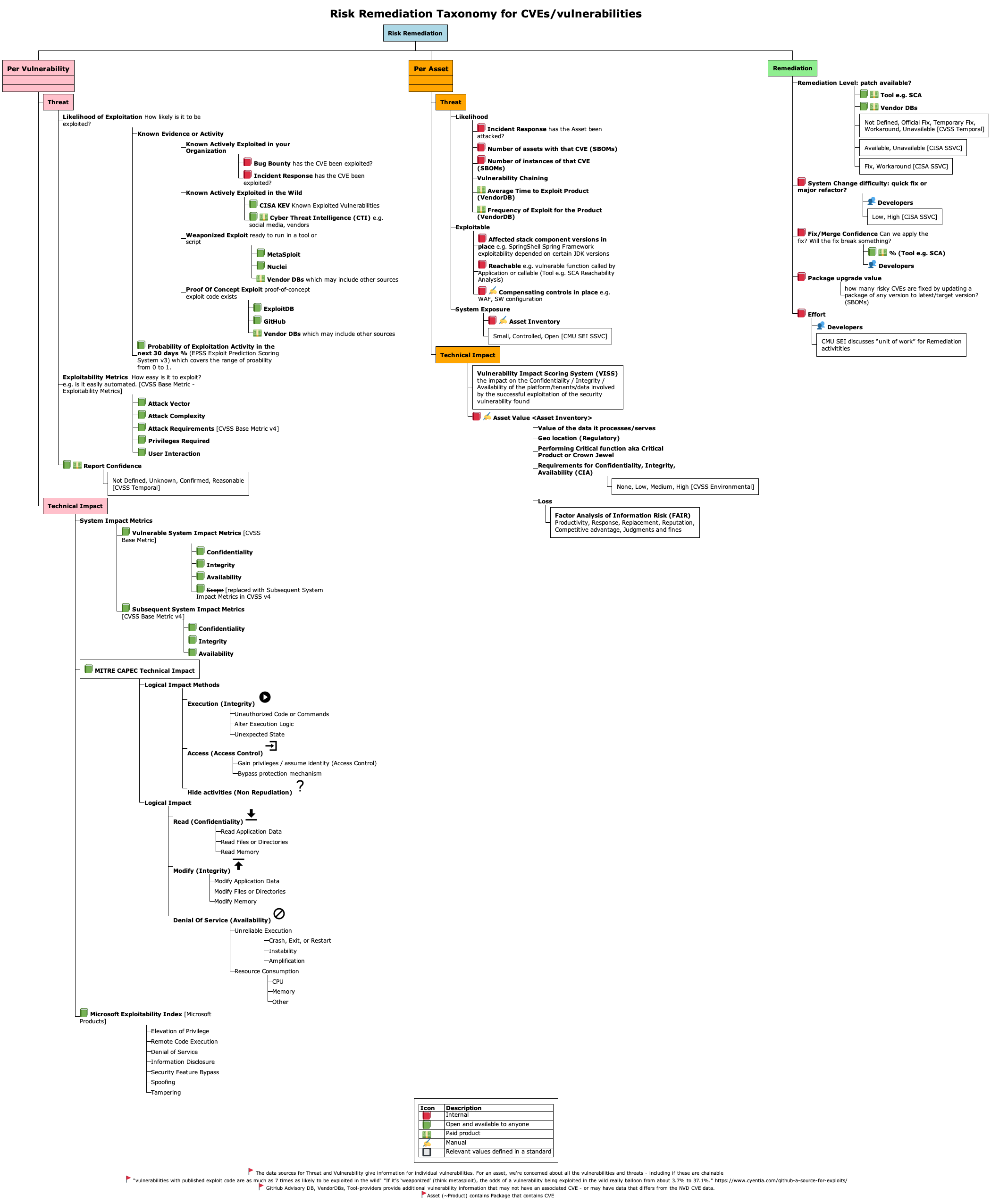Scope¶
Scope of this Guide
The scope for this guide is
- CVEs only - not vulnerabilities that don't have CVEs, not Zero Days (until they get a CVE)
- Per Vulnerability - not asset/business/runtime/other organization-specific context
CVEs¶
Not all vulnerabilities or exploits have CVEs.
However, many do, and we can use the data associated with a CVE for Risk Based Prioritization.
Per Vulnerability¶
The scope is - "Per Vulnerability" branch in the diagram below - Generic vulnerability data - not the organization-specific context
A different way of looking at this is that this guide (and the prioritization schemes herein), can be used as a first pass triage and prioritization of vulnerabilities, before the overall asset-specific business and runtime context, and remediation context, is considered, and all the context-specific dependencies that go with that.
In other words, Relative Risk per vulnerability.


Having good security hygiene, and a good understanding of your data, is recommended independent of Risk Based Prioritization
Independent of the Risk Based Prioritization in this guide:
- Good Security hygiene e.g. keeping software up to date, is effective in preventing and remediating vulnerabilities.
- Understanding your vulnerability data, and root causes, should inform your remediation.
See where this guide fits in terms of overall Risk Remediation
A more complete picture of Risk Remediation Asset and Remediation branches is shown below.
- While these are out of scope for this guide, it may be useful as a reference for your Risk Remediation.
